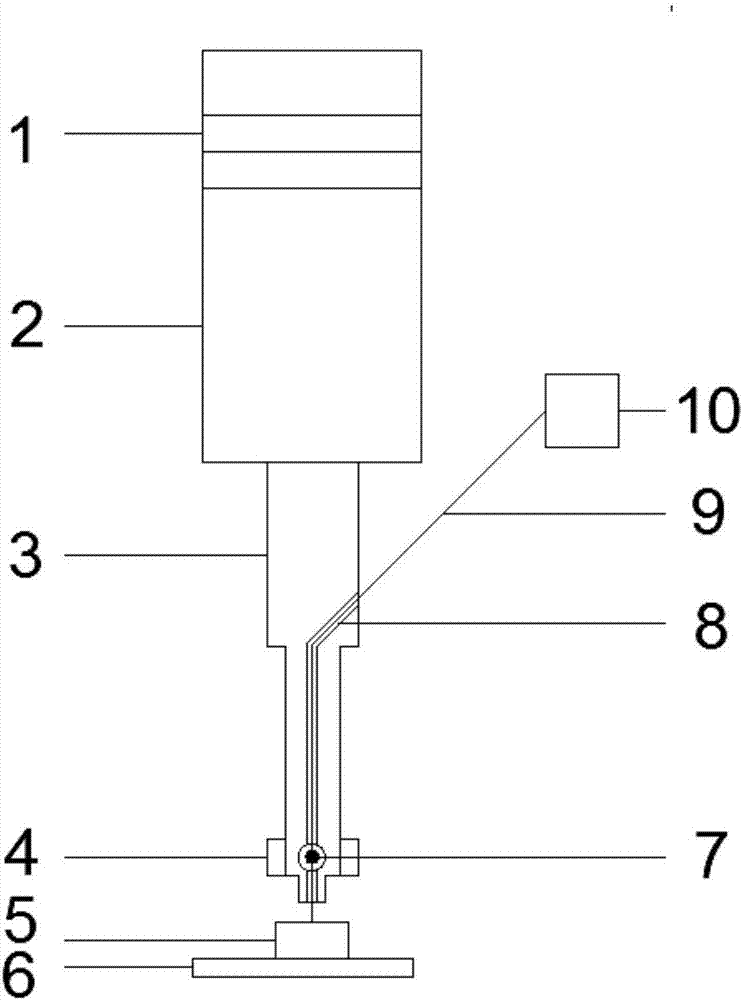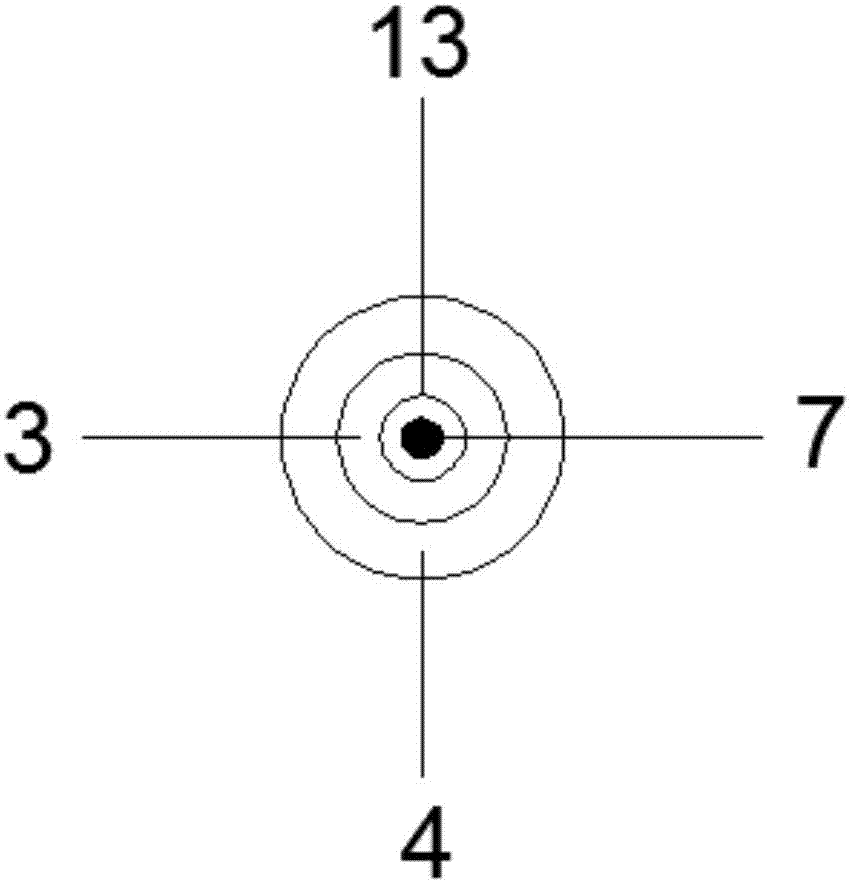3D print head
A 3D printing and nozzle technology, which is applied in the field of 3D printing nozzles, can solve the problems of coarse grains, cracks, and lack of fusion, and achieve the effects of refining grains, improving printing quality, and improving bonding strength.
- Summary
- Abstract
- Description
- Claims
- Application Information
AI Technical Summary
Problems solved by technology
Method used
Image
Examples
Embodiment 1
[0021] Such as figure 1 As shown, this embodiment provides a 3D printing nozzle, including an ultrasonic transducer 1, an ultrasonic horn 2, and an ultrasonic welding rod 3. The ultrasonic transducer 1 and the ultrasonic horn 2 are connected by bolts. The ultrasonic welding rod 3 is connected with the ultrasonic horn 2, and the ultrasonic welding rod 3 is provided with a through hole 8 for conveying printing materials. The upper end of the through hole 8 is an upward bending hole, and the entrance of the upper end is located One side of the ultrasonic welding rod 3; the lower end of the through hole extends to the end of the ultrasonic welding rod 3, and a melting device for heating the printing material to a molten state is also arranged. Such as figure 2 As shown, in this embodiment, the melting device is a heating device 4, and the heating device 4 is an annular resistance heater, which is installed at the lower end of the ultrasonic welding rod 3, and a nugget cavity is ...
Embodiment 2
[0026] Such as image 3 As shown, the structure of this embodiment is basically the same as that of Embodiment 1, the difference lies in: the difference of the melting device, the melting device in this embodiment is a laser heating emitter 11, and the heating focus of the laser 12 emitted by it is between the printing material and the The location of the workpiece contact.
[0027] Specific examples:
[0028] The printing material 9 is an ABS filament material with a diameter of 2mm. In the atmospheric environment, the material conveying device 10 is a wire feeder, and the diameter of the through hole 8 is 2.2mm. Insert one end of the ABS filament material into the material conveying device 10, and the material conveys The device 10 feeds the ABS wire into the through hole 8 of the ultrasonic variable welding rod 3, and the printing material reaches the bottom of the through hole and protrudes out. Under the irradiation of the laser 12, it forms a molten state and contacts t...
PUM
 Login to View More
Login to View More Abstract
Description
Claims
Application Information
 Login to View More
Login to View More - R&D
- Intellectual Property
- Life Sciences
- Materials
- Tech Scout
- Unparalleled Data Quality
- Higher Quality Content
- 60% Fewer Hallucinations
Browse by: Latest US Patents, China's latest patents, Technical Efficacy Thesaurus, Application Domain, Technology Topic, Popular Technical Reports.
© 2025 PatSnap. All rights reserved.Legal|Privacy policy|Modern Slavery Act Transparency Statement|Sitemap|About US| Contact US: help@patsnap.com



